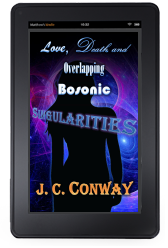The basic idea is that the ship includes a sustainable habitat for the colony population. The initial members of the mission do not live to reach the destination. Rather, their descendants do, and all the generations in between live their entire lives in the habitat.
The problems that can arise are many. One enormous issue is maintaining all of the ship’s functions over the long haul. Parts break. Metals corrode. Very few things on Earth are designed to last centuries. For instance, consider the lifespan of any personal computer you’ve owned. How long did it last? Or automobiles–they wear out over time, and very few survive more than a lifetime, even if meticulously maintained. Deep in interstellar space, there are no options for repair or replacement that don’t rely solely on the materials taken. A new degree of reliability must be designed into every piece and part, and a wide assortment of replacement parts would be essential, but would it be enough? 3D printers would help. But printers break, too.
Maintaining the habitat is similarly challenging. The vessel must be big enough to house a robust ecology. The colony ship, Peerless, in my recent novel, Towers of Earth, would be suitable (although in that story the ship moves fast enough that less than one generation passes in transit). Still, size is not enough. Kim Stanley Robinson hit the problem with precision in his terrific 2015 novel, Aurora. The ship is robust, with twenty-four separate biomes housing thousands of people each. Among other things, after seven generations, the difference in the evolutionary rate of change between macro-organisms (big things like animals and people) and bacteria, becomes a special problem in the contained environment.
Another problem is sociological. The problem that comes up in many generation-ship novels is the loss of knowledge. The people of the ship grow to consider the ship their home. Information about Earth and the mission gets lost as the stories are passed down among the generations. Ultimately, either through a forgotten mutiny or the natural progression of facts becoming legends, becoming myths, and being forgotten forever, the inhabitants of the ship can become completely ignorant that they are on a great space ark. The ship can become lost, and proceed aimlessly, with its passengers indifferent about its course. Robert A. Heinlein’s 1963 novel, Orphans of the Sky, is one such story. David Gerrald’s Star Trek novel, The Galactic Whirlpool, is another.
Another problem is sociological. The problem that comes up in many generation-ship novels is the loss of knowledge. The people of the ship grow to consider the ship their home. Information about Earth and the mission gets lost as the stories are passed down among the generations. Ultimately, either through a forgotten mutiny or the natural progression of facts becoming legends, becoming myths, and being forgotten forever, the inhabitants of the ship can become completely ignorant that they are on a great space ark. The ship can become lost, and proceed aimlessly, with its passengers indifferent about its course. Robert A. Heinlein’s 1963 novel, Orphans of the Sky, is one such story. David Gerrald’s Star Trek novel, The Galactic Whirlpool, is another.
Then there is the ethical question. Even if the mission is remembered, and it is clear where the ship is going and why, what right did the mission founders have to commit their descendants to it? The youth of every generation questions the decisions of their parents. A generation ship traversing interstellar space is an extreme example of a decision future generations on the ship might resent. This is the case in my work in progress, Plymouth Bound.
Each writer approaches the setting with a new angle and the results are often intriguing. While some of the big ideas have been explored, there is a lot of room for more. Three novels exploring the setting that I have not yet read are Dust by Elizabeth Bear, Starglass by Phoebe North, and The Forever Watch by David Ramirez.








 Annihilation, Jeff VanderMeer (FSG Originals; Fourth Estate; HarperCollins Canada)
Annihilation, Jeff VanderMeer (FSG Originals; Fourth Estate; HarperCollins Canada) Yesterday’s Kin, Nancy Kress (Tachyon)
Yesterday’s Kin, Nancy Kress (Tachyon) “A Guide to the Fruits of Hawai’i” by Alaya Dawn Johnson (F&SF)
“A Guide to the Fruits of Hawai’i” by Alaya Dawn Johnson (F&SF) “Jackalope Wives” by Ursula Vernon (Apex)
“Jackalope Wives” by Ursula Vernon (Apex) Love Is the Drug, Alaya Dawn Johnson (Levine)
Love Is the Drug, Alaya Dawn Johnson (Levine)


